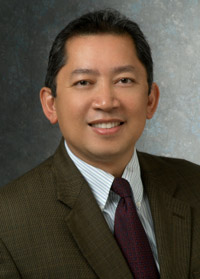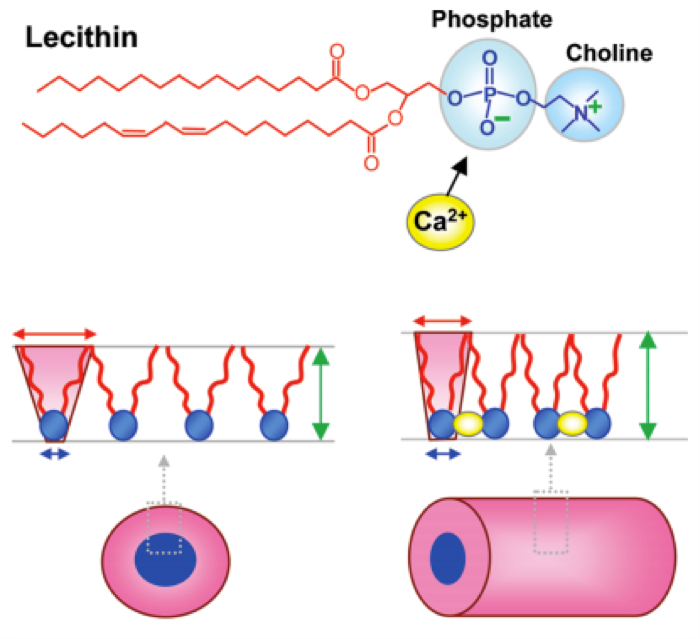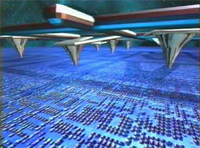QCM and Ultrathin Films Tandem with AFM - August 21, 2019
Wednesday, August 21, 2019
- 9:00 am – 10:00 am
(PDT)
San Francisco, LA - 12:00 pm – 13:00 pm
(EDT)
Boston, New York - 5:00 pm – 6:00 pm
(GMT)
London - 6:00 pm – 7:00 pm
(CET)
Paris, Rome

QCM and Ultrathin Films Tandem with AFM
Combining acoustic probe methods with surface probe microscopy.
The Park Systems 2019 Materials Matter Material Science Research and AFM Webinar Series continues with QCM and Ultrathin Films Tandem with AFM. Quartz crystal microbalance (QCM) and the use of Atomic Force Microscopy (AFM) combine acoustic probe methods with surface probe microscopy. The answer to getting the best of both techniques in in-situ and ex-situ methods lies in ultrathin films and mechanical properties.
This webinar is the eighth in our 2019 Material Science Research and AFM Webinar Series “Materials Matter,” designed to help researchers understand leading edge developments in Materials Science Research and Applications using Atomic Force Microscopy. To view videos of the previous webinars in our series, click the titles on our webinar page. Click here for information on the full series.

Presented By :
Prof. Rigoberto Advincula, Macromolecular Science and Engineering, Case Western Reserve University
Dr. Advincula is a Professor with the Department of Macromolecular Science and Engineering at Case Western Reserve University and Editor-in-Chief of MRS Communications, Materials Research Society. He was formerly Chair of the Polymer Chemistry Division, American Chemical Society (ACS). He is recognized industry-wide as an expert regarding polymer and materials and is also a member of NACE, SPE, ACS. Dr. Advincula is the recipient of numerous awards including Fellow of the American Chemical Society, Herman Mark Scholar Award of the Polymer Division, and Humboldt Fellow. More recently, he was elected Member of The National Academy of Science and Technology (Philippines). He did Post-doctoral work at the Max Planck Institute for Polymer Research and Stanford University and has published over 500 papers, including 250 peer-reviewed publications, 11 patents (and pending) – H-index of 65 with over 13,000 citations, and has co-edited the book on Functional Polymer Films, Polymer Brushes, and New Trends in Polymer Science.
Surface Plasmon Resonance Spectroscopy Tandem with AFM - September 18, 2019
Wednesday, September 18, 2019
- 9:00 am – 10:00 am
(PDT)
San Francisco, LA - 12:00 pm – 13:00 pm
(EDT)
Boston, New York - 5:00 pm – 6:00 pm
(GMT)
London - 6:00 pm – 7:00 pm
(CET)
Paris, Rome

Surface Plasmon Resonance Spectroscopy
Learn how SPR Spectroscopy can be used in combination with AFM.
The Park Systems 2019 Materials Matter Material Science Research and AFM Webinar Series continues with Surface Plasmon Resonance Spectroscopy Tandem with AFM..
SPR (surface plasmon resonance) spectroscopy enables thickness and dielectric properties at highly precise and nanometer range of measurements. In combination with AFM, the combined methods allow for both ex-situ and in-situ correspondence in thin films and adsorption phenomena.
This webinar is the ninth in our 2019 Material Science Research and AFM Webinar Series “Materials Matter,” designed to help researchers understand leading edge developments in Materials Science Research and Applications using Atomic Force Microscopy. To view videos of the previous webinars in our series, click the titles on our webinar page. Click here for information on the full series.

Presented By :
Prof. Rigoberto Advincula, Macromolecular Science and Engineering, Case Western Reserve University
Dr. Advincula is a Professor with the Department of Macromolecular Science and Engineering at Case Western Reserve University and Editor-in-Chief of MRS Communications, Materials Research Society. He was formerly Chair of the Polymer Chemistry Division, American Chemical Society (ACS). He is recognized industry-wide as an expert regarding polymer and materials and is also a member of NACE, SPE, ACS. Dr. Advincula is the recipient of numerous awards including Fellow of the American Chemical Society, Herman Mark Scholar Award of the Polymer Division, and Humboldt Fellow. More recently, he was elected Member of The National Academy of Science and Technology (Philippines). He did Post-doctoral work at the Max Planck Institute for Polymer Research and Stanford University and has published over 500 papers, including 250 peer-reviewed publications, 11 patents (and pending) – H-index of 65 with over 13,000 citations, and has co-edited the book on Functional Polymer Films, Polymer Brushes, and New Trends in Polymer Science.
New Surfactant Design - February 20, 2019
Wednesday, February 20, 2019
- 9:00 am – 10:00 am
(PDT)
San Francisco, LA - 12:00 pm – 1:00 pm
(EDT)
Boston, New York - 5:00 pm – 6:00 pm
(GMT)
London - 6:00 pm – 7:00 pm
(CET)
Paris, Rome

Designing Surfactants
The use of cost-effective chemical additives necessitates the interest for new molecular and macromolecular design of surfactants. The webinar will review the origin and classification of surfactants and technology for applications such as detergency, oilfield chemistry, and visco-elastic surfactants.
The Park Systems 2019 Material Science Research and AFM Webinar Series continues with New Surfactant Design. New surfactants are introduced when there is an effect cost-performance advantage in any industrial or extraction process or for fundamental research on the interfacial thermodynamic and kinetic behavior that leads to better structure-property and phenomenological understanding. AFM is used in a lot of surface probe manipulation and studies at flat interfaces. New hydrophobic and hydrophilic groups can be investigated including various macromolecular designs. Thus it is ideal for surfactants to be investigated as thin films in Silicon, Gold, or glass substrates by AFM.
Surfactants are ubiquitously used commercially every day. Yet there are still a number of ongoing studies on their use in surface and interfacial chemistry that relate to their dynamic behavior from Langmuir-Blodgett films to micelles. AFM as a tool, and surface probe microscopy methods in general, enable the probing of both small molecule and macromolecular surfactants at interfaces where the surfactants can be highly crystalline ordered or delivered in nanowriting methods with a cantilever tip. This enables the ins-situ and effective molecular probe and manipulation at the thin interface level.

Presented By : Prof. Rigoberto Advincula, Macromolecular Science and Engineering, Case Western Reserve University
Dr. Advincula is a Professor with the Department of Macromolecular Science and Engineering at Case Western Reserve University and Editor-in-Chief of MRS Communications, Materials Research Society. He was formerly Chair of the Polymer Chemistry Division, American Chemical Society (ACS). He is recognized industry-wide as an expert regarding polymer and materials and is also a member of NACE, SPE, ACS. Dr. Advincula is the recipient of numerous awards including Fellow of the American Chemical Society, Herman Mark Scholar Award of the Polymer Division, and Humboldt Fellow. More recently, he was elected Member of The National Academy of Science and Technology (Philippines). He did Post-doctoral work at the Max Planck Institute for Polymer Research and Stanford University and has published over 500 papers, including 250 peer-reviewed publications, 11 patents (and pending) – H-index of 65 with over 13,000 citations, and has co-edited the book on Functional Polymer Films, Polymer Brushes, and New Trends in Polymer Science.
Nanotechnology in Plastics and Packaging - October 16, 2019
Wednesday, October 16, 2019
- 9:00 am – 10:00 am
(PDT)
San Francisco, LA - 12:00 pm – 13:00 pm
(EDT)
Boston, New York - 5:00 pm – 6:00 pm
(GMT)
London - 6:00 pm – 7:00 pm
(CET)
Paris, Rome

Nanotechnology in Plastics and Packaging
Nanotechnology in this industry includes the use of nanomaterials and the investigation of nanoscale phenomena.
The Park Systems 2019 Materials Matter Material Science Research and AFM Webinar Series continues with Nanotechnology in Plastics and Packaging. This installment of the webinar series will explore the use of nanomaterials in plastics and packaging for commercial applications, electro-optical devices and their fabrication methods.
This webinar is the tenth in our 2019 Material Science Research and AFM Webinar Series “Materials Matter,” designed to help researchers understand leading edge developments in Materials Science Research and Applications using Atomic Force Microscopy. To view videos of the previous webinars in our series, click the titles on our webinar page. Click here for information on the full series.

Presented By :
Prof. Rigoberto Advincula, Macromolecular Science and Engineering, Case Western Reserve University
Dr. Advincula is a Professor with the Department of Macromolecular Science and Engineering at Case Western Reserve University and Editor-in-Chief of MRS Communications, Materials Research Society. He was formerly Chair of the Polymer Chemistry Division, American Chemical Society (ACS). He is recognized industry-wide as an expert regarding polymer and materials and is also a member of NACE, SPE, ACS. Dr. Advincula is the recipient of numerous awards including Fellow of the American Chemical Society, Herman Mark Scholar Award of the Polymer Division, and Humboldt Fellow. More recently, he was elected Member of The National Academy of Science and Technology (Philippines). He did Post-doctoral work at the Max Planck Institute for Polymer Research and Stanford University and has published over 500 papers, including 250 peer-reviewed publications, 11 patents (and pending) – H-index of 65 with over 13,000 citations, and has co-edited the book on Functional Polymer Films, Polymer Brushes, and New Trends in Polymer Science.
Nanostructured Polymer Brushes With AFM - January 16, 2019
Wednesday, January 16, 2019
- 9:00 am – 10:00 am
(PDT)
San Francisco, LA - 12:00 pm – 1:00 pm
(EDT)
Boston, New York - 5:00 pm – 6:00 pm
(GMT)
London - 6:00 pm – 7:00 pm
(CET)
Paris, Rome

Patterning Strategies and Complexities
Different techniques have developed to pattern polymers on the nano- and submicro-meter scale.
The Park Systems 2019 Material Science Research and AFM Webinar Series kicks off with Nanostructured Polymer Brushes With AFM, focusing on how Atomic Force Microscopy is a vital tool in characterizing the morphology of grafted polymer brushes.
The 2019 Webinar Series will feature materials science and industry-leading expert Dr. Rigoberto Advincula, Professor, Department of Macromolecular Science and Engineering at Case Western Reserve University and Editor-in-Chief of MRS Communications, Materials Research Society.
This month’s webinar will discuss how surface probe methods enable researchers to gain a better understanding of the effect of polymer density on the behavior – even stimuli-response behavior – of polymer brushes. We will demonstrate the use of modified techniques to enhance surface probe measurements which can be built into the tip design or the experimental design.

Presented by: Prof. Rigoberto Advincula, Macromolecular Science and Engineering, Case Western Reserve University
About Prof. Rigoberto Advincula
Dr. Advincula is a Professor with the Department of Macromolecular Science and Engineering at Case Western Reserve University and Editor-in-Chief of MRS Communications, Materials Research Society. He was formerly Chair of the Polymer Chemistry Division, American Chemical Society (ACS). He is recognized industry-wide as an expert regarding polymer and materials and is also a member of NACE, SPE, ACS. Dr. Advincula is the recipient of numerous awards including Fellow of the American Chemical Society, Herman Mark Scholar Award of the Polymer Division, and Humboldt Fellow. More recently, he was elected Member of The National Academy of Science and Technology (Philippines). He did Post-doctoral work at the Max Planck Institute for Polymer Research and Stanford University and has published over 500 papers, including 250 peer-reviewed publications, 11 patents (and pending) – H-index of 65 with over 13,000 citations, and has co-edited the book on Functional Polymer Films, Polymer Brushes, and New Trends in Polymer Science.


